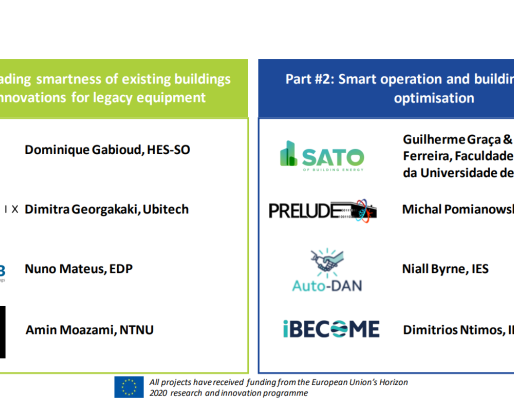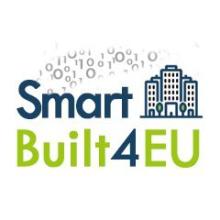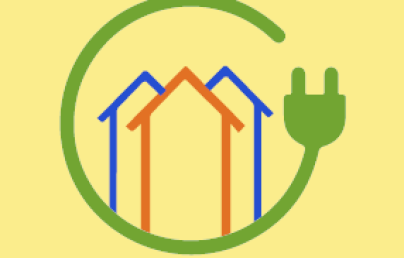SmartBuilt4EU workshop - Smart operation and building dynamic optimization

SmartBuilt4EU workshop - Smart operation and building dynamic optimization
The SmartBuilt4EU project organized a workshop about Innovations to upgrade the smartness of the building at Sustainable Places Conference this year with the participation of the SB4EU partners, CINEA on behalf of the European Commission and several EU-funded projects. The workshop hosted presentations from the several EU-supported Innovation projects where the project representatives pitched the value proposition of their expected smart buildings innovations, associated impacts and lessons learnt.
The presentations these EU-funded projects took place in two sessions:
- Part 1: “Upgrading smartness of existing buildings through innovations for legacy equipment”
- Part 2: Smart operation and building dynamic optimization
This article gives an overview on the projects presented, the innovations and lessons learnt / next steps in the project.
Part 2: Smart operation and building dynamic optimization, moderated by Karine Laffont-Eloire from DOWEL Innovation and Nerea Gómez from ECTP.
SATO project aims to create an IT (Information Technology) platform for automated self-assessment and optimization of buildings’ energy. The platform will enable the assessment of real-life building energy use and energy consuming equipment operation. The project is coordinated by FCiências.ID - Association for Research and Development of Sciences and will last for 4 years ending in 2024.
The project’s innovations & unique selling point:
- Seamless data and system integration through semantic-based interoperability.
- Automated discovery of assessment and services based on semantically annotated models of building components.
The project’s lessons learnt
- It is difficult to setup pilots that are on the edge of building capability.
- Building energy systems and components are not IoT enabled or open.
- There is a need to identify a small set of KPIs (Key Indicator Performance) that users understand.
PRELUDE project proposes a proactive optimization service based on smart technologies. The service provides clear and appropriate feedback and suggests retrofitting operations on a cost-efficient basis. The project is focused on assessing the right level of smartness necessary for any given household and then providing the optimal tools according to the needs of the user. The project is coordinated by Aalborg University and will end in 2024.
The project’s innovations & unique selling point:
- Decision support systems with modular multisimulation capacity (FusiX middleware)
- In PRELUDE, Fusix is responsible for: Integrate technology enablers in a multi -simulation platform: Acting as middleware, aggregate data from various technological level buildings, integrate simulation and forecasting technologies, enhance intelligence, schedule and run simulations based on the collected/forecasted information and provide feedback to the users or directly to the buildings via controlling signals.
The project’s lessons learnt
- Challenge: Middleware has to be able to communicate with different IoT commercial solutions (protocols) – the first establishment is challenging (both building and middleware).
- Promises: middleware relieves technology enablers from the burden of adapting their algorithms to a particular building.
- Buildings require flexible assessment solutions – both considering inputs and outputs.
- Connection of a single building/apartment seems to be unfeasible unless fixed requirements are imposed to address energy services such as PRELUDE.
- Technology enablers heavily depend on data availability (still observed mismatch between what buildings have available and technology requirements, however, we can see a massive change towards data availability).
AUTO-DAN will deploy augmented intelligence solutions in EU buildings using Data analytics, an interoperable hardware/software Architecture and a Novel self-energy assessment methodology. The project coordinated by IES R&D started in October 2020 and will last for 4 years.
The project’s innovations & unique selling point:
- The smart hardware infrastructure will adopt a flexible approach to ensure it can be integrated into most small buildings regardless of existing automation/metering systems. The technology partners have vast demonstrated commercial experience in smart appliances, ICT equipment & monitoring equipment & each building will receive a hardware installation that is tailored for its existing resources.
- Auto-DAN will leverage existing software tools to enable the real-time monitoring of buildings & to enable valuable energy insights that will provide building occupants with energy data about their operations, leveraging the interoperable software architecture that is created through Auto-DAN.
- A novel live energy assessment method will be produced that will be self-assessing in real-time & will advance the current state of the art for energy assessment, as it will incorporate in-use monitoring & factor smart capabilities into its methodology
The project’s next steps
- Installation of Hardware Solutions in Demo Sites
- Ongoing Development & Testing of Digital Occupancy Model
- Testing & Validation of User Dashboards
- Development & Testing of Live-Audit KPIs
iBECOME will demonstrate the functionality and viability of a virtual Business Management System (BMS) platform deployed as a SaaS solution. The project aims to reduce bills in a building or facility, improve occupant wellbeing and optimizing comfort by leveraging IoT, data analytics and the efficient control of a building and finally, enable additional services such as EV charging optimization.
The project’s innovations & unique selling point:
- The iBECOME vBMS (virtual Business Management System) will be automatically controlling on-site BMS or other ICT equipment.
- On-site IoT sensors and smart meters will be feeding real time information of the building along with data from energy markets and weather conditions.
- Using the predictions of the forecasting toolbox to enable energy savings through energy and comfort optimization of building’s energy systems.
- Data cloud storage and analysis, visualization of performance metrics, display of insights and suggestions for manual interventions.
The project’s future targets
- Reduce the energy use and energy bills in a facility by 15%
- Reduce Comfort complaints by 20% and improve Indoor Air Quality by 10%
- Improve the smart readiness of buildings by 10% (SRI)
- Track, prevent and reduce equipment and operational faults by 20%
- Improve wellness by 20%
- Generate revenue by energy savings to invest in further Energy Conservation Measures
Visit the SmartBuilt4EU project website to watch the recording and find the EU projects pitches presentations.
Read part 1 of the article here.

